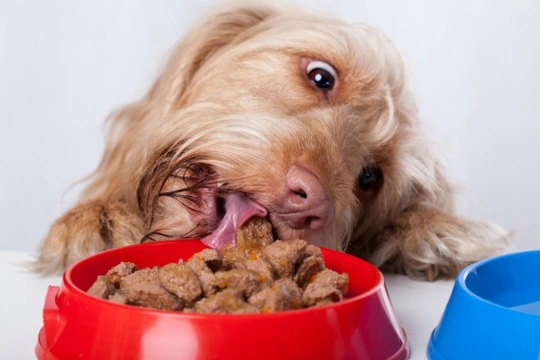
How to minimise the chances of your dog developing bloat
The canine condition known as bloat is technically called gastric dilation, or gastric dilation volvulus (GDV). This is a serious condition that is fast in onset, often with no prior warning signals, and requires prompt veterinary attention in order to give your dog the best chance of surviving an attack.
All dog owners should be aware of the symptoms of bloat or GDV and be prepared to act quickly if you spot a suspected attack, and this is particularly true for owners of dog breeds that are considered to be at high risk of developing the condition. You can find out if your dog is at a potentially high risk of developing bloat by reading the checklist in this article.
While bloat cannot always be prevented and is not unique to any particular breed, there are a few steps that you can take to reduce the chances of your dog developing bloat in the first place, including remaining vigilant to the symptoms of the condition. In this article, we will look at the various ways in which you can take some basic steps to minimise the chances of your dog developing bloat.
What is bloat?
Bloat is formally called gastric dilation, which is a condition that occurs when the stomach of the dog fills with a dangerous amount of stomach gas, causing it to become taut and distended to the point that it narrows the entrance and exit of the stomach so that the gas cannot be passed in the normal way. Gastric dilation volvulus is the progression of the condition that causes the stomach to flip over on itself due to the volume of gas present, causing a twist in the stomach that effectively totally cuts off the entrance and exit of the stomach, keeping it from righting itself naturally.
Prompt surgery is required to disperse the gas and re-open the stomach’s entrances, and to correct the twist if a full GDV occurs. Without surgical treatment, bloat is commonly fatal within a short space of time, being very painful and uncomfortable for the dog in the interim.
Minimising risk factors
There is no guaranteed formula to be able to prevent canine bloat, and the condition is not fully understood in terms of the precise causes and combination of risk factors for the condition. However, over time, a range of observations have been made about bloat and as such, various potential risk factors have been identified, and these can be tackled to reduce the ultimate risk.
Dental problems
If your dog has bad teeth or other dental problems that cause them pain when biting and chewing their food normally, they are likely to try to get around this by gulping and swallowing their food whole rather than masticating it properly. This can lead to gas building up in the stomach as the food has not begun the digestive process in the mouth where it should do, and so increase the risk of bloat.
Get your dog’s teeth checked out by your vet to make sure that they can eat comfortably and don’t feel the need to swallow their food whole.
Eating too fast
If your dog wolfs their food down in the blink of an eye, they are again at risk of not digesting their food properly and causing problems such as indigestion and potentially, bloat. Your dog may be eating too fast in order to protect their food from another dog in the home that might steal it, or because due to their history, they fear that their food will be taken away or that food is scarce.
Try to address the underlying problem that causes your dog to eat too quickly, and also try to slow down their eating by placing an obstacle such as a large rubber ball in their food dish that they have to eat around, so slowing down their eating.
Eating too much at once
Most dogs are fed twice per day, or in some cases, only once, with a large meal being provided at this time. Only feeding your dog once a day is a bad idea for many reasons, including the fact that eating 24 hours’ worth of food at a time is likely to lead to digestive discomfort and an increased risk of bloat. Feed your dog at least twice per day, or ideally, three times to minimise the risk.
Eating or drinking immediately before or after exercise
Anything that leads to digestive discomfort can increase the risk of bloat, such as taking your dog out for a lively walk immediately after eating, or feeding them as soon as they come back from a walk when they are still excited. Make sure that your dog has had a chance to digest their food properly before exercise, and don’t feed your dog after a walk until they are calm and relaxed.
Make sure that your dog has free access to water at all times, and is not able to become dehydrated. Filling the stomach with water or drinking a lot of water in a short period of time can also raise the risk of bloat.
Eating too high up
Up until a few years ago, advice for owners of dogs that are considered to be at high risk of bloat used to be to raise the height of the food and water bowls so that your dog could eat at head height without bending down, in order to reduce the chances of bloat. However, it has now been identified that feeding your dog in this way can actually increase the risk of bloat rather than reduce it, so feed your dog at floor level and not from raised bowls or on a step.



